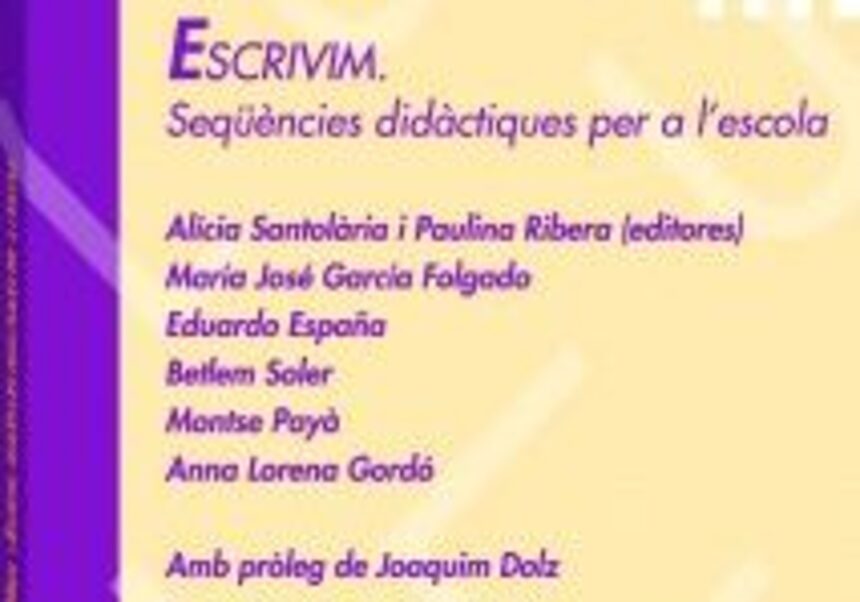
Escribimos book. Didactic sequences for school, coordinated by Alícia Santolària and Paula Ribera (prologue written by Joaquim Dolz). It is a publication edited by Edicions del Bullent that includes part of a research carried out in collaboration between some members of the GIEL group and some lecturers of the CEIP Jaime I of Catarroja (València).
The book is divided in several chapters that cover writing teaching through textual genres and didactic sequences. In this way, Pulina Ribera presents, ¿Por qué secuencias didácticas? (Why didactic sequences?) which includes a long explanation of the reason that launched the project. On the third chapter, Escribir fichas técnicas sobre cuentos en Educación Infantil (Writing data sheets about tales on Preschool Education), Alícia Santolària shows how it is possible to promote the writing of expositive texts in the first years of school. On the fourth chapter, Escribir fichas técnicas sobre cuentos en segundo la Educación Primaria (Writing data sheets on tales in the second year of Primary Education), the same author shows in detail the didactic sequence designed and offers some results of the research. On the fifth chapter, Paulina Ribera, M. José García Folgado and Eduardo España show a didactic sequence on biography. Cómo y qué puede aprender el alumnado (How and what can be learnt by students), created for working in the second and third cycle of Primary Education in a work project conducted by students of the centre. On the sixth chapter, El proceso de diseño de una secuencia didáctica sobre la nota crítica (The design process of a didactic sequence on a review), which was the continuity from the previous one, Paulina Ribera and Eduardo España explain in detail how it was designed. On the seventh chapter, Escribir una biografía en inglés (Writing a biography in English) with students of Primary Education, Belén Soler uses the biographic genre on third cycle and in English. The eight chapter, Una secuencia didáctica para aprender a escribir cuentos (A didactic sequence for learning to write tales), is presented by Paulina Ribera and Eduardo España. The last chapter is written by two of the lecturers (Anna Gordó and Montse Payà) who participated in the project.
In addition, this book goes with another one: Escribir con secuencias didácticas. Materiales docentes. (Writing with didactic sequences. Teaching materials). It can be found at RODERIC (the institutional repository of the Universitat de València in the following link: http://roderic.uv.es/handle/10550/58974). It consists on didactic sequences that include different genre texts (data sheet, review, biography and tale) though for being used in different educational and scholar levels and in the three languages of the Valencian curriculum.
Publishing both books, GIEL shows the interest of proposing researches done in class concerning teaching and learning of writing and reveals the need of creating synergies connecting the university field with schools of preschool and primary education.








